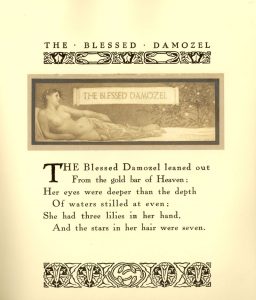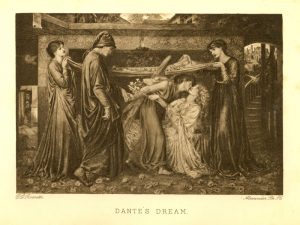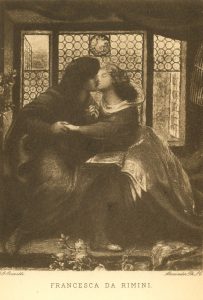Dante Gabriel Rossetti was an artist, poet, and founder of the Pre-Raphaelite brotherhood. Edward Burne-Jones introduced him to William Morris.
There was an inherent instability to Rossetti’s personality; in the words of Pater, “To him life is a crisis at every moment.” Initially Morris and Rossetti were very close friends and some even described their relationship as Morris’s ‘hero worship’ of Rossetti. Later they grew apart, likely due to Rossetti’s chemical dependencies and his affair with Jane Morris.
Rossetti poured his life and mental energy into his work, and it reflects that. Symons sums up Rossetti’s work; “part of what hypnotizes us in his work is, no doubt, that sense of personal tragedy which comes to us out of its elaborate beauty; the eternal tragedy of those who have loved the absolute in beauty too well, and with too mortal a thirst.”
Work
Portraits
Rossetti was an intense and often sullen looking man. Like Morris, he grew fat as he aged. It is sometimes difficult to see in the portraits of Rossetti the charisma that so enraptured his fans and admirers.
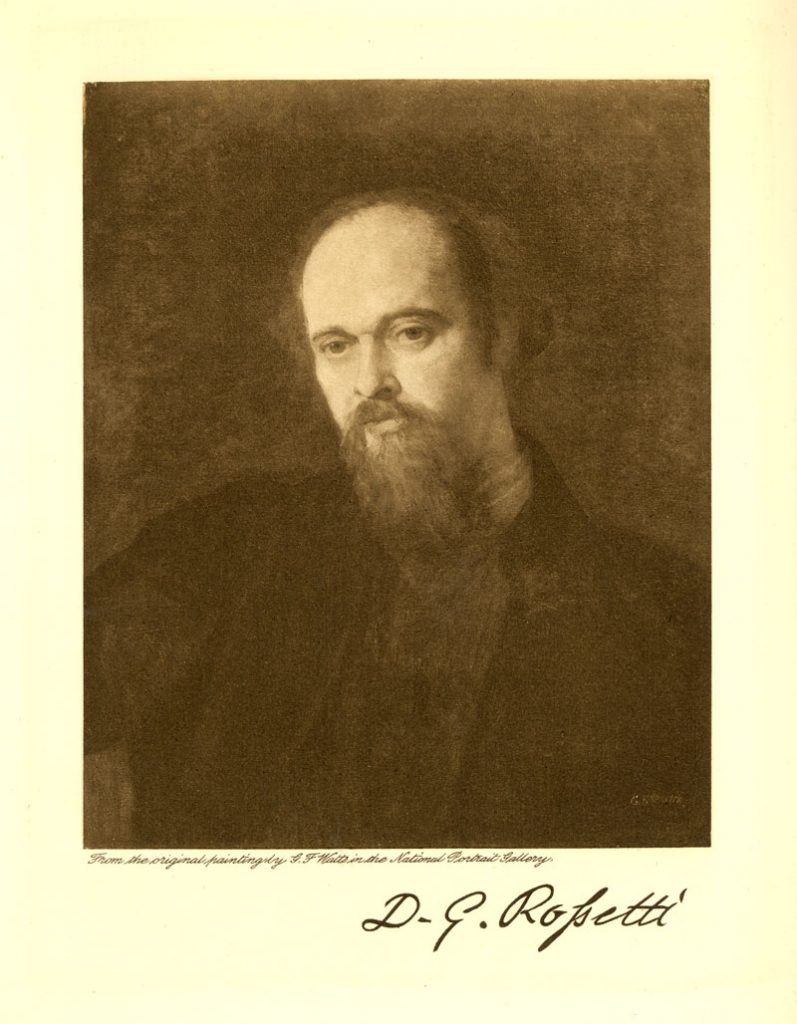
Portrait of Rossetti by George Frederic Watts 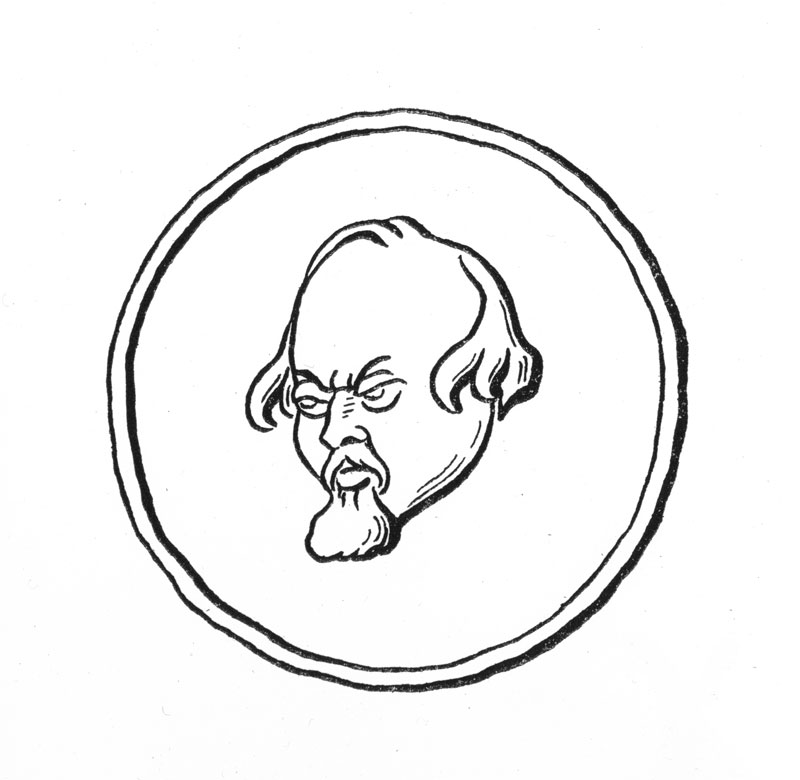
Portrait of Rossetti by Max Berrbohm
Cartoons
One of the most unusual pieces in the Archives and Rare Books Library’s Morris collection is the book of cartoons by Sir Max Beerbohm; Rossetti and His Circle. Beerbohm was a British essayist and parodist in the early 1900s best known for his caricature work.
Beerbohm was a friend of Oscar Wilde and Aubrey Beardsley and his social connections enabled him to get close to his subjects. This volume is a collection of caricatures of Dante Gabriel Rossetti and the Pre-Raphaelites. Though the lives of Rossetti only overlapped Beerbohm’s for ten years at the end of his life, and it is unlikely they ever met, Beerbohm clearly found Rossetti and his companions to be fascinating. Speaking about the Victorian Era, Beerbohm says: “Rossetti belonged to that – though he was indeed born nine years before it began, and died of it nineteen years before it was over. For him the eighteen-fifties-and-sixties had no romance at all. For me, I confess, they are very romantic—partly because I wasn’t alive in them, and partly because Rossetti was” (vi). He goes on to say: “In London, in the great days of a deep, smug, thick, rich, drab, industrial complacency, Rossetti shone, for the men and women who knew him, with the ambiguous light of a red torch somewhere in a dense fog. And so he still shines for me.” It is clear that Beerbohm intended to stave off those who would find his work offensive, and his respect for Rossetti seems genuine.
This work also contains caricatures of Rossetti’s sister Christina, John Ruskin, Algernon Swinburne, William Holland Hunt, John Millais, George Meredith, Oscar Wilde, and Elizabeth Siddal.
One plate depicts Rossetti working on the murals at the Oxford Union. This project was one of the first commissions Morris, Rossetti and Burne-Jones secured, a precursor to Morris, Marshall, Faulkner and Co.
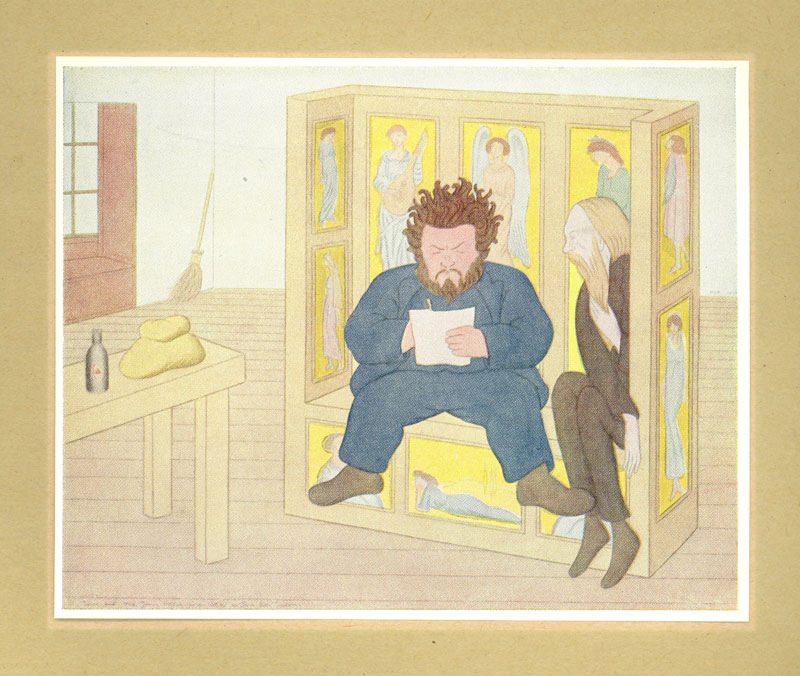
Topsy and Ned Jones, settled in the Settle in Red Lion Square 
William Bell Scott wondering What It Is Those Fellows Seem to See in Gabriel 
Rosetti insistently exhorted by George Meredith to come forth into the glorious sun and wind for a walk to hendon and beyond. 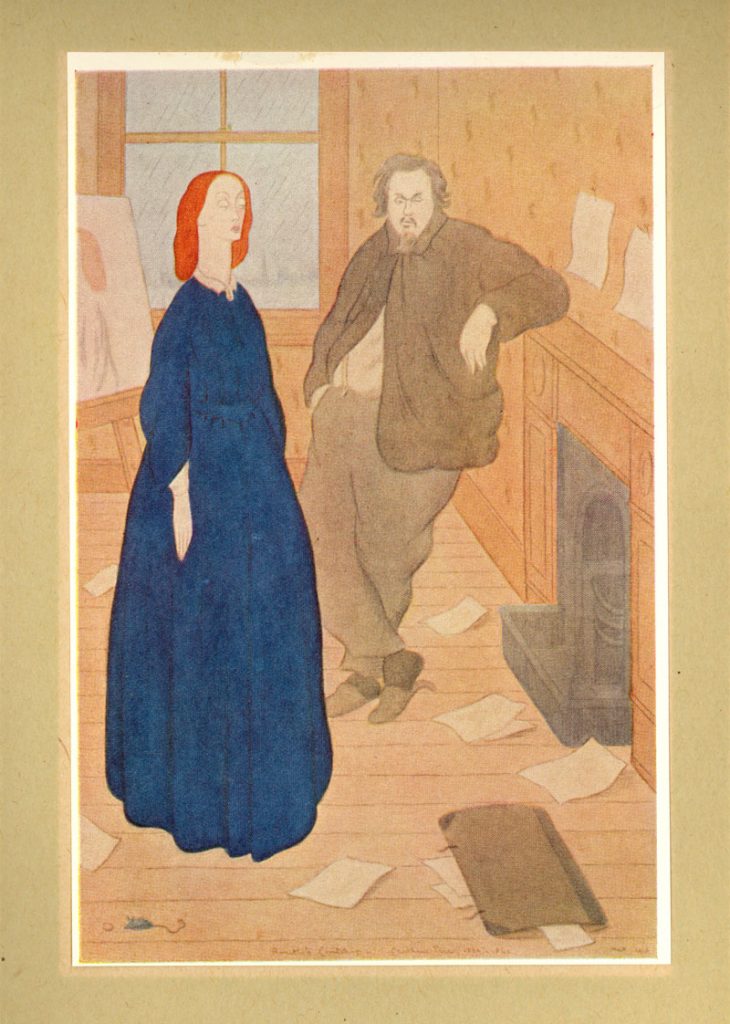
Rosetti’s courtship
Another image prominently features William Morris, entitled Topsy and Ned Jones, settled in the Settle in Red Lion Square. The nickname Topsy was used by Morris’s friends and as has been noted, supposedly came from the young slave girl character in Uncle Tom’s Cabin who had unruly, curly hair. Morris is depicted as squat, fat and stubborn, his large girth pushing the skinny Jones into the corner of a square stiff chair, a piece that happened to have been designed by Morris and Company.
Several scenes depict Rossetti at work, with one of his models arranged in front of him. These models seem to be an amalgamation of Elizabeth Siddal and Jane Morris, and are always depicted in hunched positions, with the exaggerated necks that Rossetti so admired.
One scene is entitled William Bell Scott Wondering What It Is Those Fellows Seem to See in Gabriel, and depicts all of the “circle” gathered around Rossetti. Morris holds the ‘hand’ of a lamb and gestures to Rossetti while a bizarre creature scowls at Scott in the foreground. This illustrates the power of charisma Rossetti had over his talented friends and contemporaries, and the completeness of the fantasy world he wove around himself.
The addition of the animals is a reference to the medieval fantastical symbolic style of the Pre-Raphaelites and the reality of Rosstti’s exotic pet collection.

